Under-Eye Bag Surgery for a Bright and Refreshed Look
Bring the sparkle back to your eyes
Having sagging under-eye bags is a common problem, especially among older adults, resulting in a tired, dull appearance that makes you look older than your age, even if you’re well-rested. Under-eye bag surgery (Lower Eyelid Surgery) is an effective solution that reduces sagging, tightens the skin around the eyes, and boosts your confidence by giving you a rejuvenated, youthful look.
Causes of Under-Eye Bags
Under-eye bags (Lower Eyelid Bags) refer to bulging or puffiness beneath the eyes, which occurs due to a combination of factors. The three main causes are as follows:
1. Aging and Degradation of Tissue Around the Eyes
This is the primary cause seen in people aged 40-60. It results from natural changes in the skin and fat layers around the eyes, leading to permanent under-eye bags that cannot be fixed by simple methods like massaging or using eye creams.
2. Genetics
Some individuals may have a predisposition to under-eye bags from a young age, with a tendency for fat to accumulate under the eyes earlier than normal. If combined with poor lifestyle habits, this genetic trait can cause under-eye bags to appear sooner than expected.
3. Daily Lifestyle Factors
Besides age and genetics, lifestyle choices also play a significant role in the development of under-eye bags. These include:
- Lack of sleep or poor rest leads to poor lymphatic circulation around the eyes and fluid retention.
- Excessive salt intake causes the body to retain sodium, resulting in swelling under the eyes.
- Frequent eye strain or rubbing can cause inflammation and rapid degradation of the skin.
- Smoking and alcohol consumption accelerate collagen breakdown and blood circulation issues.
- Allergies or chronic sinus problems can lead to fluid buildup or inflammation around the eyes, temporarily worsening under-eye puffiness
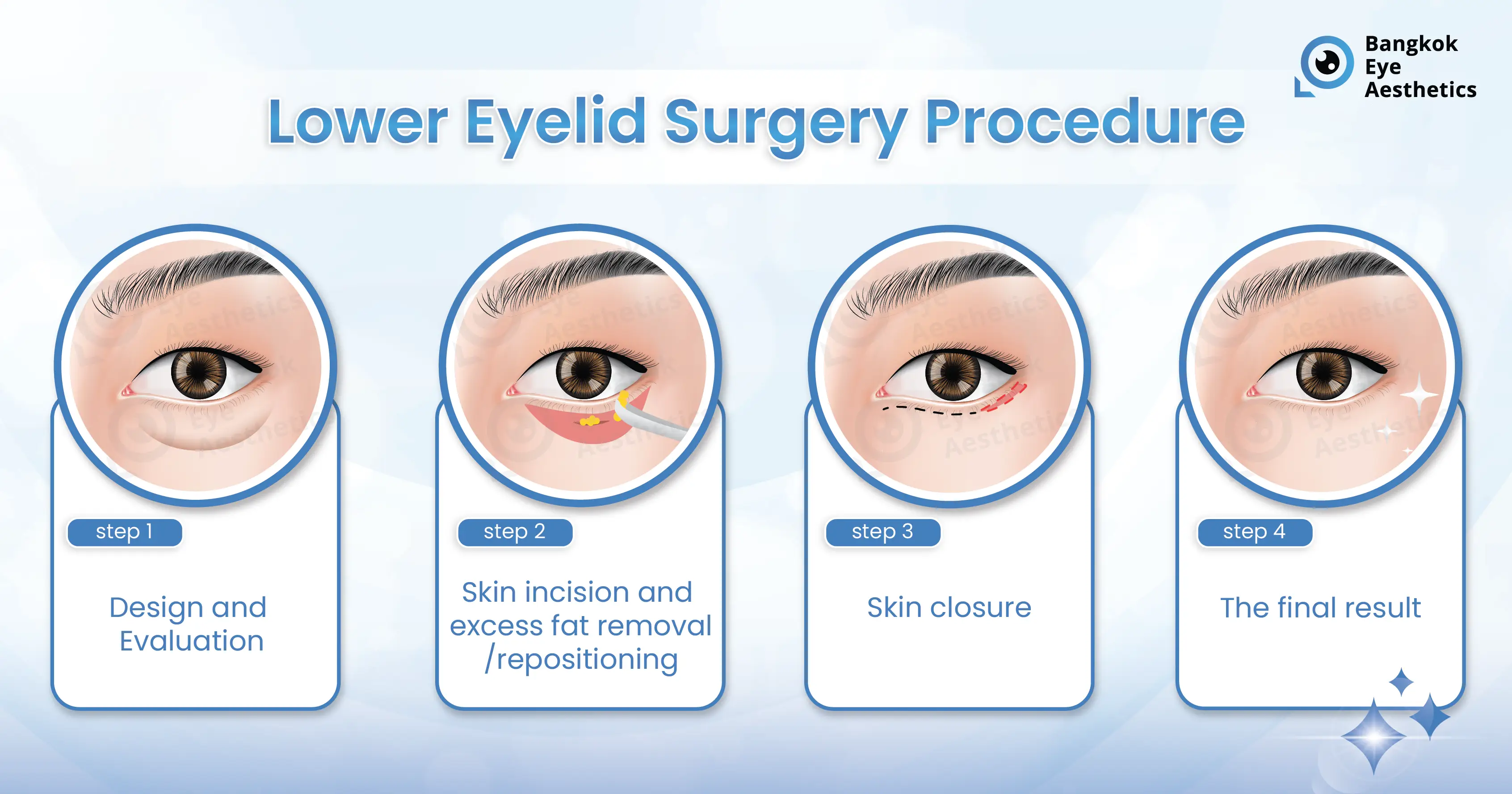
Under-Eye Bag Surgery with Hidden Incision Technique at Bangkok Eye Aesthetics (BEA Clinic)
Under-eye bag surgery is designed to correct sagging, puffiness, and tired-looking eyes caused by excess fat and loose skin. The hidden incision technique, which is performed inside the lower eyelid, is used to remove or redistribute excess fat. This procedure is commonly done for individuals who begin noticing the appearance of under-eye bags with age. If left untreated, it can lead to further skin sagging and wrinkling.
In some cases, where there is significant skin sagging, the ophthalmologist may choose to remove the excess skin using a hidden incision at the lower lash line.
Prior to surgery, our ophthalmologists assess each case individually to select the most appropriate technique based on the patient’s needs.
Who is Suitable for Under-Eye Bag Surgery?
Under-eye bag surgery is generally suitable for anyone experiencing the following concerns:
- Puffiness or bulging fat under the eyes that makes you look tired and aged.
- Loose skin under the eyes that causes wrinkles and premature aging.
- Uneven under-eye bags between the two eyes.
- Drooping lower eyelids or sagging outer corners due to aging.
Steps for Under-Eye Bag Surgery
At BEA Clinic, there are two main techniques for under-eye bag surgery: the external incision technique and the internal incision technique. The procedure steps differ depending on the chosen technique:
External Incision Technique
The external incision technique involves making a small incision along the lower lash line to remove excess fat and sagging skin. This method is suitable for individuals who have both fat accumulation and skin sagging beneath the eyes, typically seen in those aged 45 and above. The steps include:
- Assessing the amount of fat and skin sagging beneath the eyes.
- Marking the incision line along the lower lash line to ensure the scar remains hidden.
- Making an incision through the skin and muscle layer.
- Removing or redistributing the excess fat appropriately.
- If necessary, trim excess skin.
- Closing the incision with fine sutures to align with the natural lash line.
Internal Incision Technique
The internal incision technique is performed by making a small incision inside the lower eyelid, eliminating the need for any visible external scar. This method is primarily used to remove excess fat under the eyes without affecting the skin. The key benefit of this approach is that there is no visible external scar. It is ideal for individuals with fat accumulation under the eyes, but no significant skin sagging. The steps include:
- Assessing the amount of fat and skin condition under the eyes.
- Making a small incision inside the lower eyelid.
- Removing or redistributing the excess fat beneath the eyes.
- Allowing the inner layer to heal naturally without the need for sutures.
- Applying cold compresses and following post-surgery care instructions.
Preparing for Under-Eye Bag Surgery
Proper preparation is crucial to ensure a smooth, safe surgery and minimize the risk of complications. Please follow these guidelines:
- Inform the doctor of your full medical history, including any pre-existing conditions, medications, allergies, and previous surgeries.
- Discontinue certain medications and supplements, such as blood thinners or fish oil, at least 1 week before surgery to prevent excessive bleeding during the procedure.
- Rest well for 2-3 days before surgery and avoid prolonged eye strain.
- Stay hydrated, reduce salt intake, and avoid alcohol and smoking to minimize swelling after surgery.
Post-Surgery Care for Under-Eye Bag Surgery
As mentioned earlier, there are two techniques for under-eye bag surgery: internal and external incisions. For the internal incision technique, the incision is hidden inside the lower eyelid, so it is important to avoid rubbing or pressing the area. You should follow the prescribed eye drops and avoid makeup around the eyes. Additionally, refrain from wearing contact lenses for at least 7-10 days after surgery to avoid irritation or infection.
For patients with significant skin sagging who undergo the external incision technique, a small scar may appear along the lower lash line. Applying cold compresses during the first 48 hours will help reduce swelling. If you follow the proper wound care guidelines and avoid touching the area, the scar will fade over time.
Post-surgery, some discomfort, swelling, and bruising around the eyes are expected, particularly within the first 1-3 days. However, with proper medication and aftercare, these side effects should resolve on their own, and the final results will become clear within 3-6 months, depending on the individual.
Potential complications are rare, but should you experience any of the following, seek medical attention immediately:
- Severe hollowing or deep under-eye indentations.
- Numbness around the surgical site.
- Abnormal bleeding from the incision.
- Infection at the incision site.
Meet Our Ophthalmologist
Dr.Jirach Jatechayanon
Dr.Jirach Jatechayanon is a skilled ophthalmologist specializing in eyelid surgery and reconstructive eye procedures. He has extensive experience in ptosis repair, double eyelid surgery, and eyelid skin treatments.
- Bachelor of Medicine, Rangsit University
- Board Certification in Ophthalmology, Khon Kaen University
- Certificate of Advanced Training in Double Eyelid Surgery under the guidance of Dr. Cheangariyavong, Facial Plastic and Reconstructive Surgeon
- Certificate of Advanced Training in Double Eyelid Surgery through the International Fellowship in Advanced Aesthetic Science program (IFAAS), South Korea
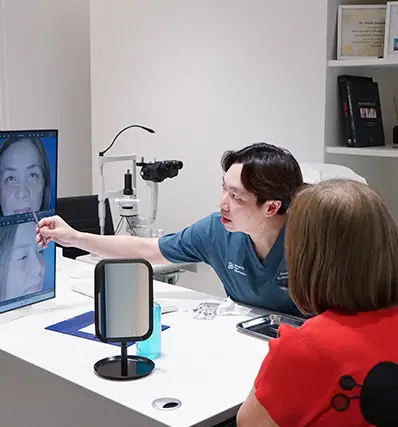

Before & After
Results may vary for each individual.
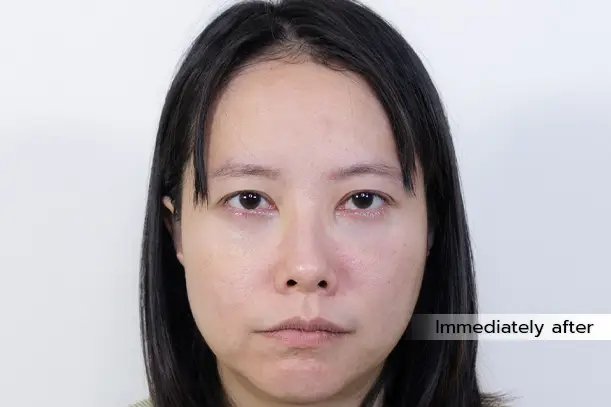

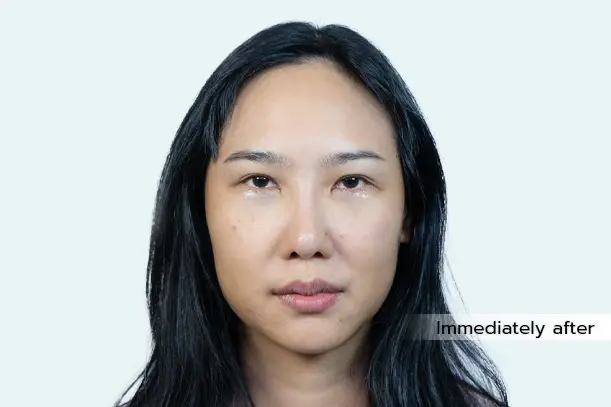





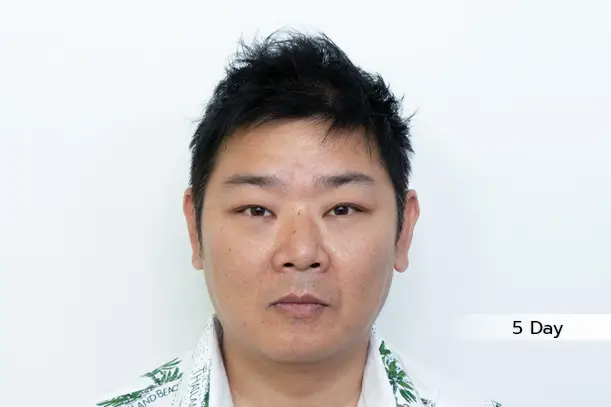


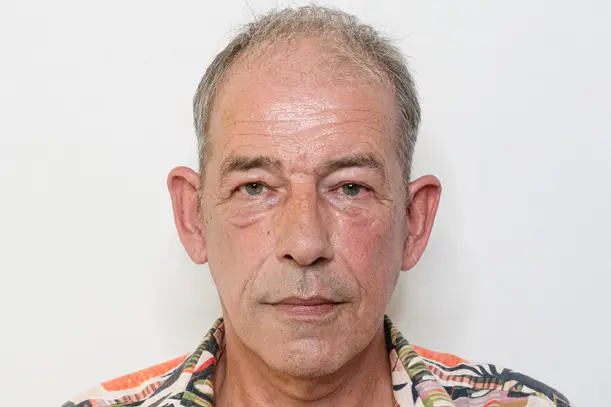
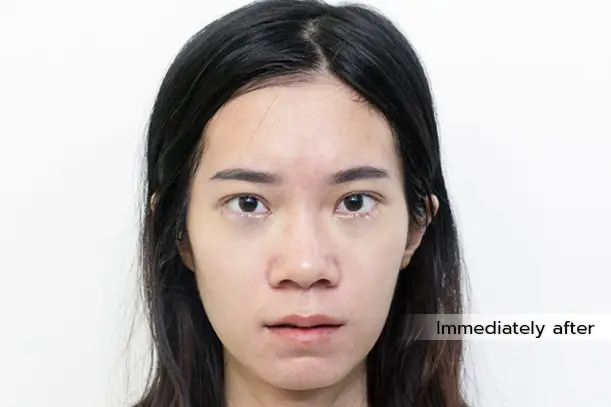

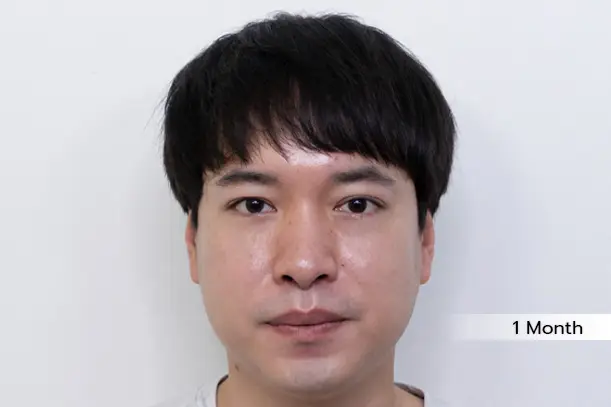

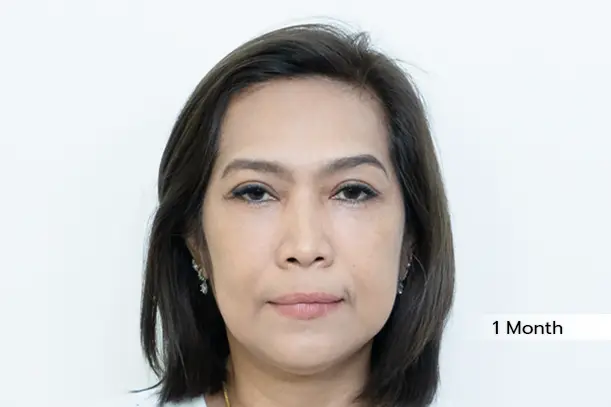

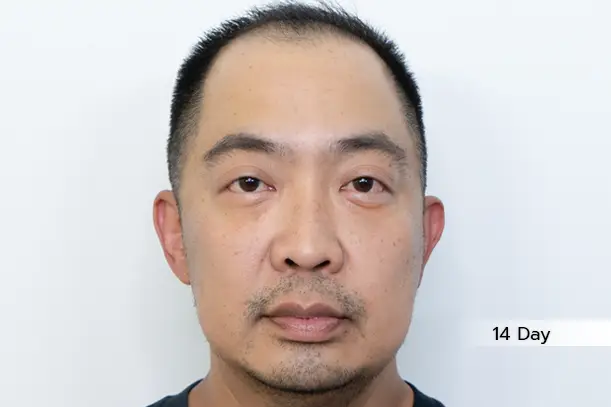

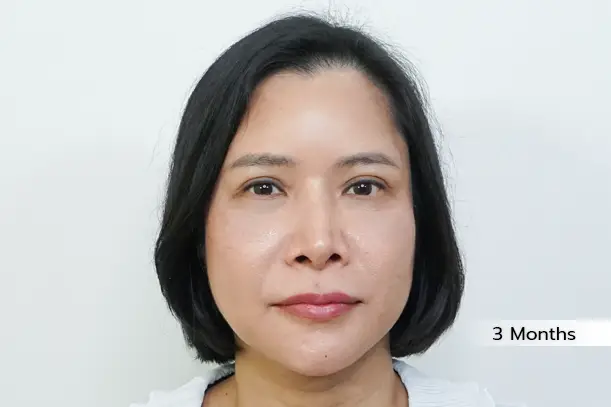
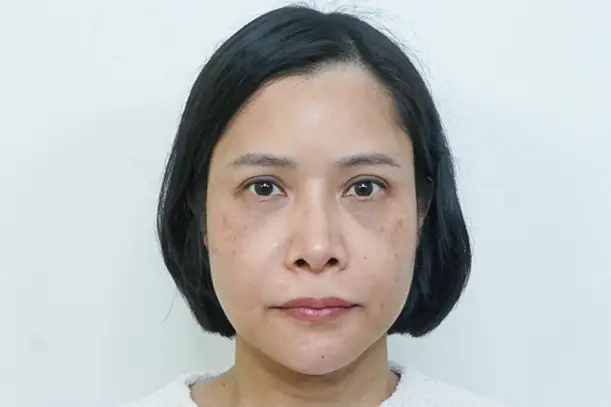
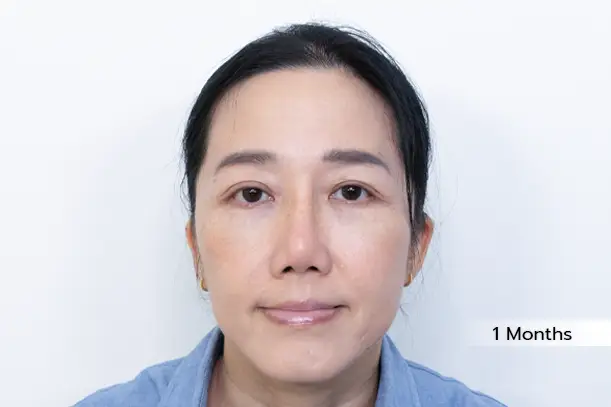

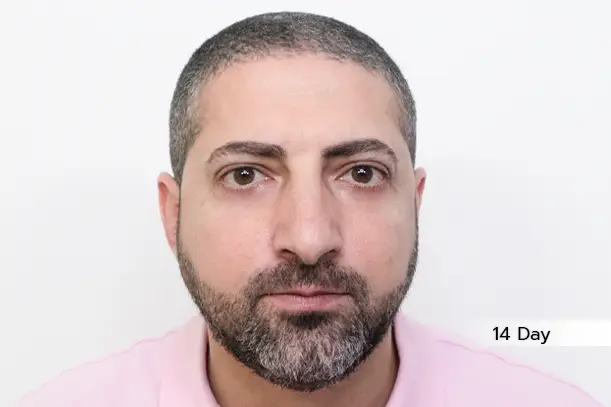



Before & After
Here are examples of the results from under-eye bag surgery performed with the hidden incision technique at BEA Clinic. If you're struggling with under-eye bags, schedule a consultation with our ophthalmologist to plan your treatment. Contact us via LINE Official : https://lin.ee/gKyYK6F
*Results may vary depending on the individual.
Frequently Asked Questions (FAQs)
1. What is under-eye bag surgery?
Under-eye bag surgery (Lower Eyelid Surgery) is a procedure that removes excess fat and tightens sagging skin beneath the eyes. The surgeon makes a small incision near the lower lash line to remove or redistribute the fat, improving the under-eye appearance and providing clear, lasting results.
2. Will the incision be visible after surgery?
The incision is made along the natural lower lash line, making the scar discreet. After the healing process, the scar is typically difficult to see, especially if the surgery is performed by an experienced ophthalmologist.
3. How long is the recovery period?
Recovery typically takes about 3-5 days. Swelling and bruising will subside within 1-2 weeks, and most patients can return to light activities after the stitches are removed.
4. How long will the results last?
The results are long-lasting, as the surgery addresses the root cause of the issue. With proper care, you may not need to undergo the procedure again unless affected by aging or lifestyle factors.
5. Can the surgery be combined with other procedures?
Yes, under-eye bag surgery can be combined with other procedures like double eyelid surgery or eyelid lifts, but it should only be done under a doctor's supervision to ensure safety and optimal results.
Procedures that goes well with this service
Request for Surgical Recommendation
Bangkok Eye Aesthetics : Your destination for eyelid surgery by a highly-skilled board-certified eye surgeon
Request Free Consultation















